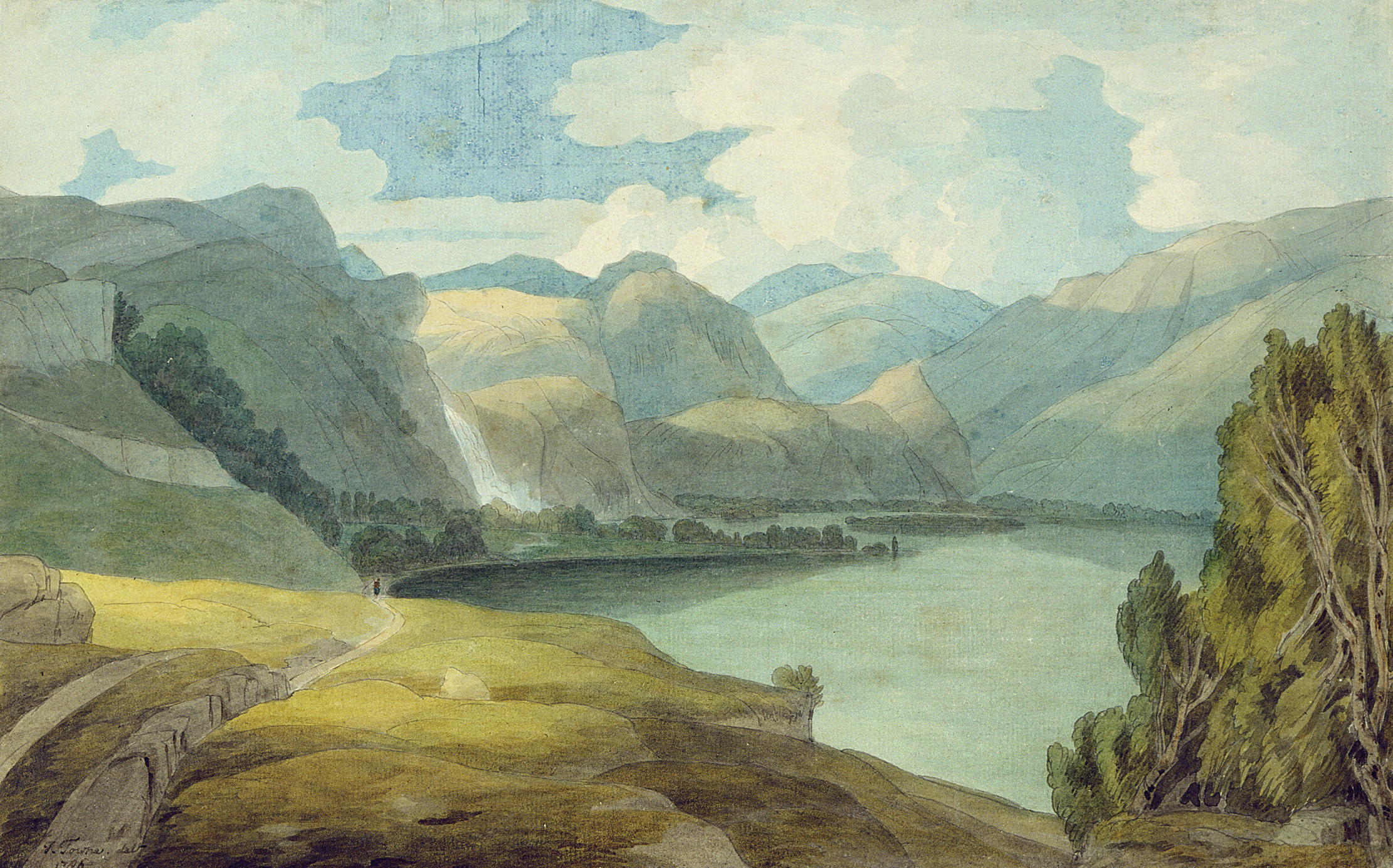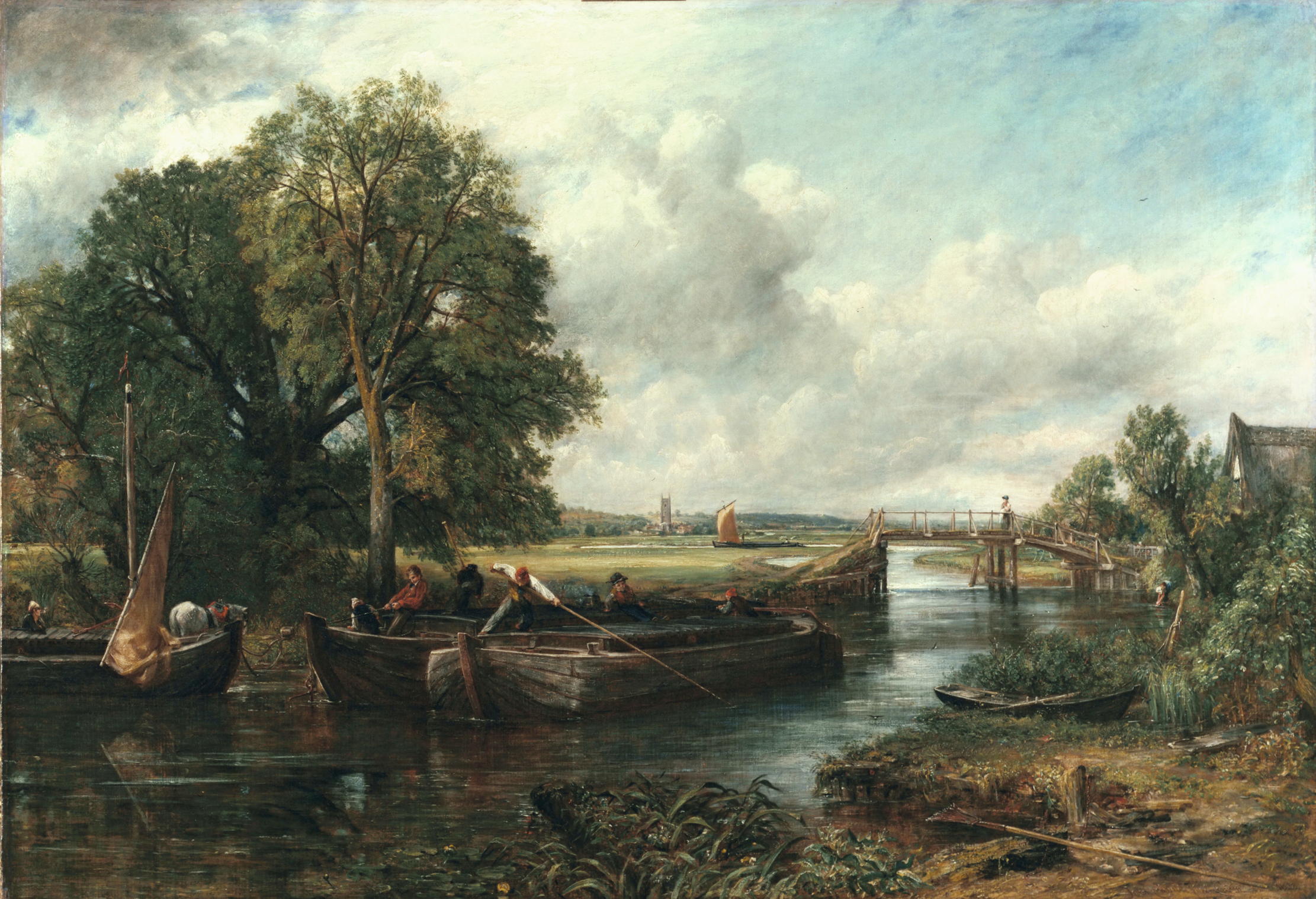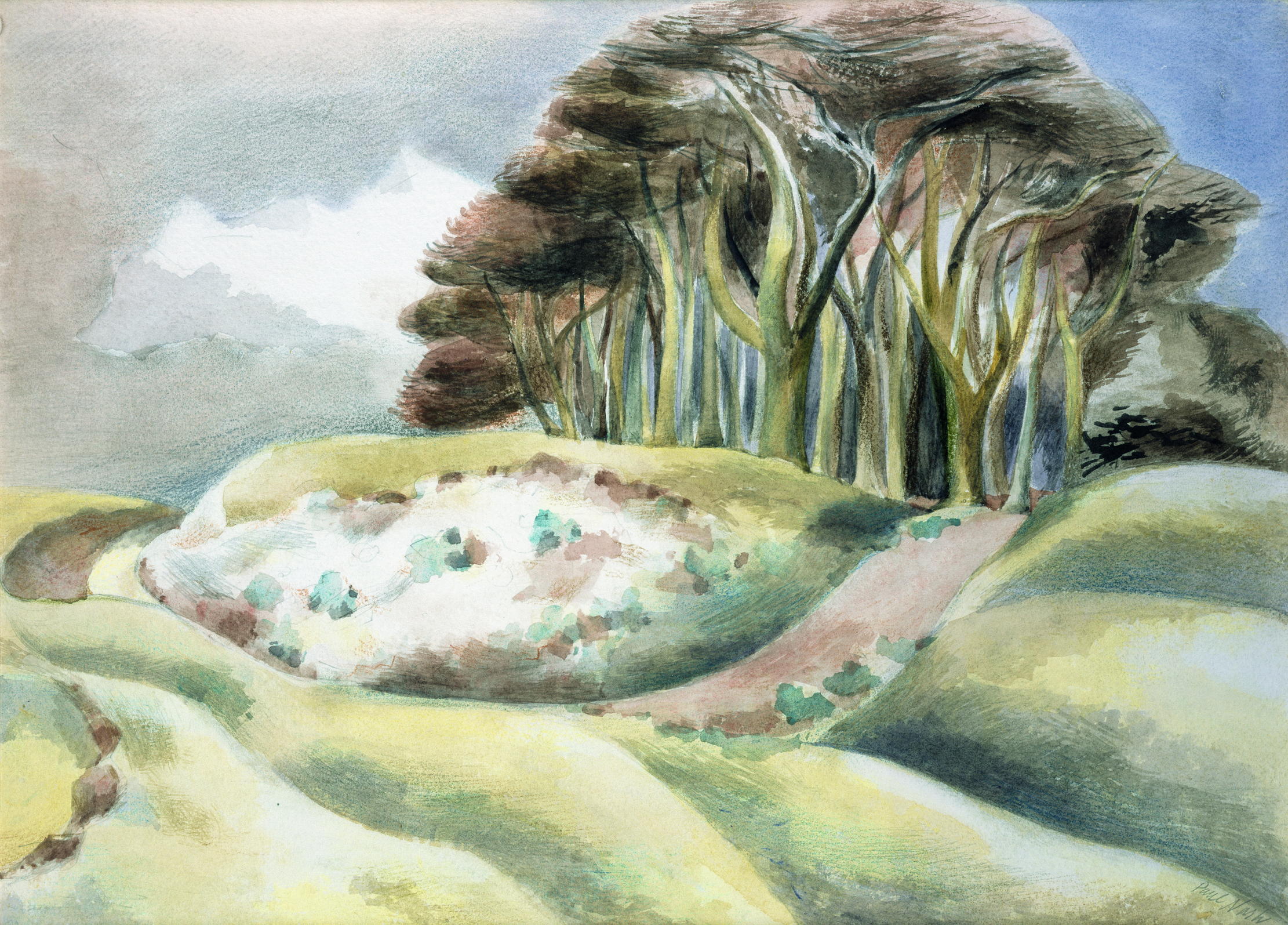Michael Prodger: How Britain’s landscapes have inspired painters across the centuries
Constable thought of his beloved Stour valley as his mistress, Samuel Palmer saw the Darent valley as a soft, pillowy realm where corn is always ripe. Michael Prodger reveals how Britain’s landscapes have inspired painters across the centuries.


In 1821, John Constable wrote a love letter to his native landscape, the fields and meadows along the River Stour, which forms the boundary between Essex and Suffolk. It is undemonstrative country, low lying and offering little by way of drama, but he was besotted with it. ‘Painting is with me but another word for feeling,’ he wrote and it was those riverside pastures, woods, mills and locks absorbed during childhood wanderings that, he said, ‘made me a painter, and I am grateful; that is, I had often thought of pictures of them before ever I touched a pencil’. For Constable, landscape came first, painting second.
He tried other regions, too — Dorset, Hampstead Heath and Brighton beach — but in his heart he remained faithful to the Stour valley. In his letters, he returned again and again to the intensity of his feeling for Nature, best expressed through the cherished local views. ‘Landscape is my mistress,’ he declared and one who ‘unveiled her beauties to me’; he may or may not have had the good grace to blush.
The stream of pictures he painted of the Vale of Dedham, of Stoke-by-Nayland, of Flatford and East Bergholt are the equivalent of a poet writing sonnets to his beloved. Indeed, there is something proprietorial in the name that came to be given to his particular speck of eastern England: Constable Country has about it a hint of jealousy and ownership. Other painters — Rembrandt, Gauguin, Picasso, for example — painted their mistresses, too, but, where theirs were flesh and blood, Constable’s was green, watery and organic.

Poets were the masters of expressing the profundity of love for a place — Wordsworth’s Lake District, A. E. Housman’s Shropshire with its ‘blue remembered hills’ or John Clare, whose feeling for Northamptonshire ran so deep that he absconded from a mental asylum in Epping Forest to tramp home — and Constable can be counted among their number. He was perhaps lucky that his first love turned out to be his true love. Gainsborough, who was born only 15 miles away from Constable, loved his local scenery, too, but success as a portrait painter — a ‘phizmonger’, as he put it dismissively and resentfully — meant that rather than getting outside and painting in the fields, he stayed indoors and composed little mises-en-scène from lumps of coal, pools of milk and stems of broccoli, painting imaginary ‘landskips’ from them.
If the Stour ran through Constable’s world, it was the River Darent in Kent that watered Samuel Palmer’s imagination for a decade from 1826. When Palmer met William Blake and saw his woodcut illustrations for Robert Thornton’s Pastorals of Virgil, he thought them to be ‘visions of little dells, and nooks, and corners of Paradise: models of the exquisitest pitch of intense poetry’. He found a real-life version of that paradise in the Kent village of Shoreham, where he bought a cottage he nicknamed ‘Rat Abbey’. With its steep-sided hills, hanging woods, water meadows and sense of seclusion, the dale became his ‘Valley of Vision’.
North Kent was no more immune to rural poverty or the Captain Swing agricultural riots of the early 1830s than anywhere else, but, for Palmer, it was an Arcadia, and he painted it as such. In his Shoreham, the corn is always ripe, the leaves are either green or russet-golden, blossom froths and poets and shepherds lounge picturesquely in the folds of hills, as fat sheep graze and the air thrums with fecundity. Not for him, a dreamy 20-something, ‘the gaudy daylight’ of the actual world, but a soft and pillowy realm, where ‘Blessed thoughts and visions haunt the stillness and twilight of the soul’. He wanted his pastoral to be untainted by reality, so he reimagined the Darent valley into a seductive idyll.

Less than a century later, the war artist Paul Nash also had a need for mystical landscape. On his return from the First World War, he suffered a breakdown and went to Dymchurch, on the Kent coast, to recover. The grey-green Channel and long, geometrical concrete sea wall he painted there in a series of bleak landscapes were reflections of his mental state — relentless forces engaged in an eternal battle. However, as he calmed, he returned again and again to a landscape he had encountered as a teenager, the Wittenham Clumps, south of Oxford, a pair of wood-topped hills marked with Bronze and Iron Age workings. They are not high, but nevertheless rise above the flatness of the surrounding Thames valley. ‘The country about and about is marvellous,’ Nash wrote. ‘Grey hollowed hills crowned by old, old trees, Pan-ish places down by the river wonderful to think on, full of strange enchantment… a beautiful legendary country haunted by old gods long forgotten.’
Exquisite houses, the beauty of Nature, and how to get the most from your life, straight to your inbox.
The lure of those old gods never wavered: Nash first drew the Clumps in 1912 and was still painting them in 1946, the year of his death. Their antiquity, their pagan strangeness, their place in the seasons — he painted them at the summer solstice, at the vernal equinox and during the moon’s last phase — tugged at him. ‘I felt their importance long before I knew their history. They were the pyramids of my small world.’ Having seen during two World Wars what man could do to man, he sensed there something timeless, beyond the besmirching reach of humans.
There were, of course, plenty of painters whose attachment to particular landscapes was still profound, if less psychologically necessary. In 1786, for example, Francis Towne, a Londoner who lived in Exeter, made his first visit to the Lake District. Over the course of two weeks, he made at least 100 drawings and watercolours showing Lakeland views, complete with notes on conditions at the time (‘½ past 7 O clock/The sky a Clear warm light/mountains a solemn purple tint/the Lake reflecting the sky, the/Sun in the picture’ reads one). The watercolours he created from these sketches — flat colour filling in between inked outlines — are compellingly stylish and were meant for the many tourists who, fired by recent theories about the Picturesque and Sublime, travelled to Britain’s extremities in search of ‘prospects’.

Towne only achieved modest success and failed 11 times to become a Royal Academician. Yet his pictures of crags, lakes and pastures cut by rays of sunlight are evidence of a man whose initially objective approach to the drama of the Lake District became ever more subjective as he uncovered the structure of the landscape. He was, said a young admirer, ‘one of the strangest geniuses I have seen’.
Towne was a favourite of Eric Ravilious and something of his method and clarity can be found in the many watercolours of the South Downs made by the latter in the 1930s. This was the landscape of Ravilious’s youth: he had grown up in Eastbourne in the lee of their slopes and he used their familiarity as a way of pioneering a modernised type of watercolour painting. Unlike an earlier Downland painter, Sir William Nicholson, who used luscious strokes of thick oil paint, Ravilious, who was ‘worried by the excess of green’ in the average English landscape, used a ‘starved brush’. His Downs are summoned up not in washes, but in hatchings and dashes. He would treat the hills and plateaux as simultaneously ancient and modern and would mix the manmade with the natural — a wire fence on a grassy slope, a lump of farm machinery in a field. People may have left their mark on the scene, but they are almost always offstage: the landscape endures even if they do not.
Whether painting the Long Man of Wilmington, Beachy Head, chalk paths or lines of cut hay swooping towards the distant hills, he managed to make them that little bit strange. Ravilious’s friend Edward Bawden said that the painter had ‘almost flawless taste’ and part of that was that he never showed the Downs or the Essex scenes around Great Bardfield, where the two men lived for several years, from the obvious viewpoints. The landscape was in a sense his own, so he made it personal.
There have been, of course, numerous other artists who have painted the same area over and over again, in an attempt not only to capture its features, but to understand what made it so special to them. David Hockney returned to Yorkshire in his seventies to paint the Wolds as the seasons rolled through; Joan Eardley, born in West Sussex, found her real home and subject in the 1950s at Catterline, a fishing village on Scotland’s north-east coast; in the early 20th century, Spencer Gore envisaged the landscape around Letchworth Garden City as a kind of Provence in Hertfordshire; Ivon Hitchens turned Sussex lanes and ponds into rhythms in paint. Wherever they were, all, in their own ways, were trying to paint exactly the same thing: the elusive, but seductive spirit of place.
Michael Prodger is a senior research fellow at the University of Buckingham and art critic for the New Statesman.
